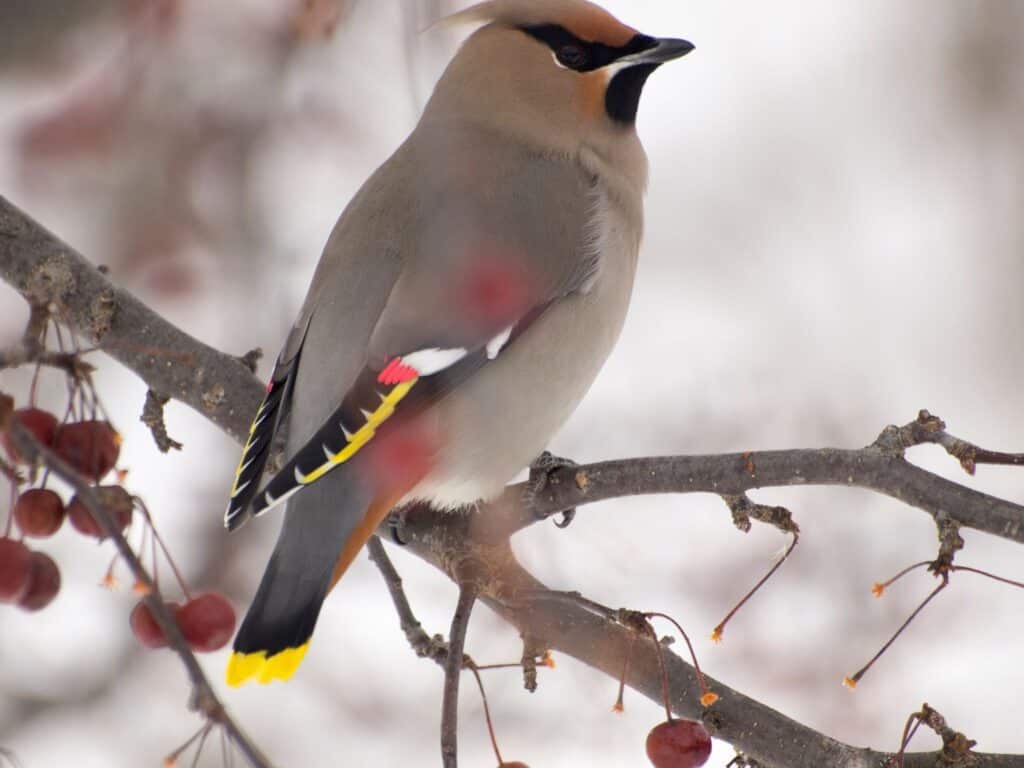Stock up your feeders because winter finches are coming
Peterborough Examiner – October 21, 2022 – by Drew Monkman
Like every fall, I’ve been busy meeting the food demands of the many birds descending upon our yard and feeders. October is an especially busy month as southbound migrants pass through, stopping for a week or more to refuel on my offerings of birdseed. Until last week, at least two dozen white-throated sparrows and a handful of white-crowned sparrows were gorging themselves on the millet I scatter on the ground. Two male purple finches added a nice splash of colour to the resident chickadees and house finches coming to the sunflower seed feeder.
But, despite our best attempts to entice them to stay, migrants such as these are already deserting us in favor of wintering grounds south of the border. The purple finches along with most of the sparrows have already departed. The only consolation is the arrival of a flock of dark-eyed juncos that will probably keep us company for the entire winter.
If you’re hoping for more bird diversity in your yard in the coming months, there is good news. The late fall and winter of 2022-23 should see the arrival of several species of “winter finches” in central and southern Ontario. This term is used to describe highly nomadic, northern species like redpolls, siskins, purple finches and pine grosbeaks.
Some winters, these finches are totally absent from the Kawarthas, while other years, they can empty feeders in less than a day. But why do finch numbers fluctuate so widely? The short answer is the status of the wild food crop. Winter finches move southward – or east or west – when there is a shortage of food in their boreal forest breeding territories of northern Ontario and Quebec. The wild foods they depend upon most are the seeds and berries of trees such as birches, alders, American mountain-ashes, pines, and spruces. If seed crops are good in the north, the birds stay put. If food is lacking, they will sometimes fly thousands of kilometres to find it.
From 1999 to 2019, Ron Pittaway of the Ontario Field Ornithologists prepared an annual forecast of what species to expect in the coming fall and winter. Three years ago, Tyler Hoar of Oshawa took over forecasting duties. According to Hoar, there’s a good chance we’ll see a repeat of last year’s strong showing when nearly all of the winter finches put in an appearance in the Kawarthas. The only species we’re less likely to see in the coming months are purple finches and white-winged crossbills.
Individual forecasts
1. Pine siskins: Although a bumper crop of spruce cones will keep large numbers of siskins in western Canada this winter, Hoar expects most of the siskins remaining in the eastern boreal forest to move southward in search of food. We should therefore expect some to turn up locally. Siskins prefer nyger seeds in silo feeders. Watch for them, too, feeding on the seeds of eastern white cedars.
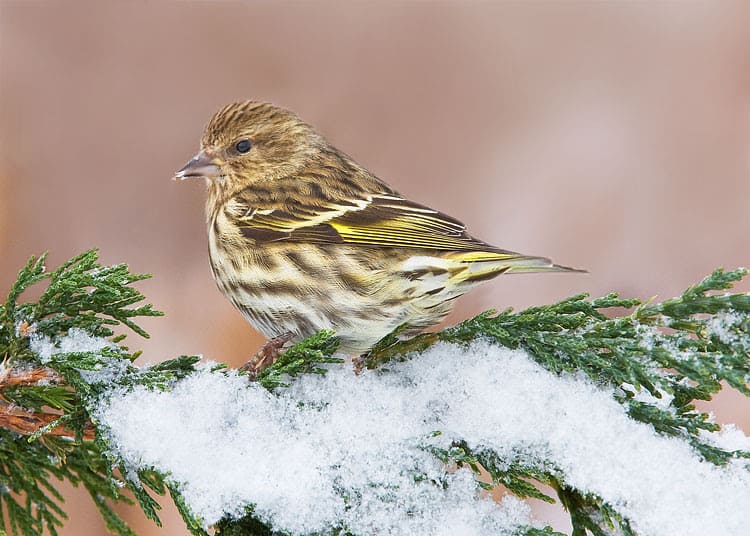
2. Common and hoary redpolls: Redpolls also feed largely on tree seeds. Given that the crops on birches and alders are only poor to average in the north, there is potential for a moderate to good movement of these birds south into central Ontario. Watch for redpolls in weedy fields and on birches. At feeders, they prefer nyger and black oil sunflower seeds. If a flock graces your backyard, look carefully for small numbers of hoary redpolls, as well. They tend to be larger, paler, and smaller-billed than common redpolls.
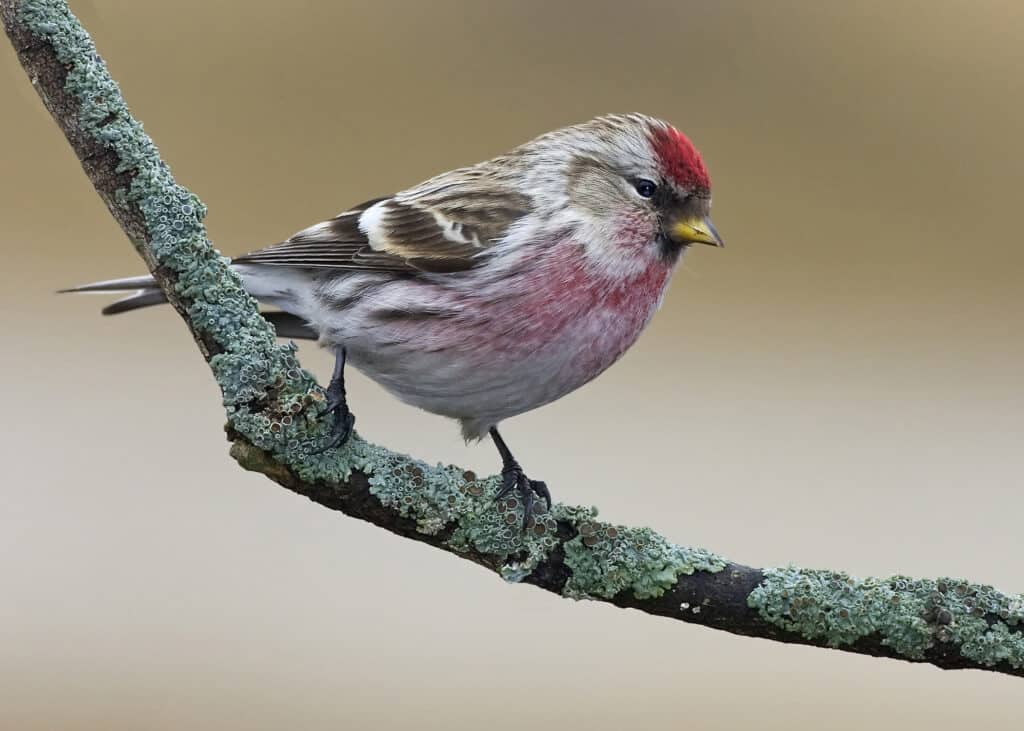
3. Purple finch: These finches are expected to migrate south from central Ontario this winter. Early movement has been occurring for weeks. Only small numbers are likely to remain here. An easy way to tell purple finches from look-alike house finches is by checking the tip of the tail; the former has a distinctly notched or slightly forked tail, whereas the house finch’s tail is squared off. Both species prefer black oil sunflower seeds at feeders.
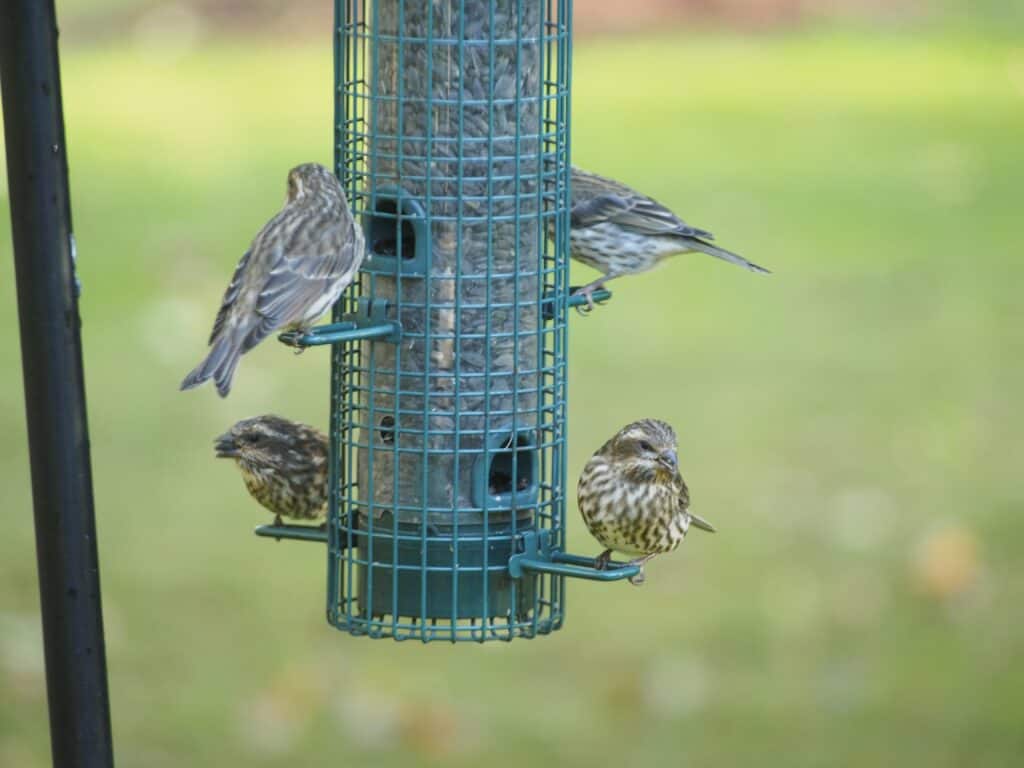
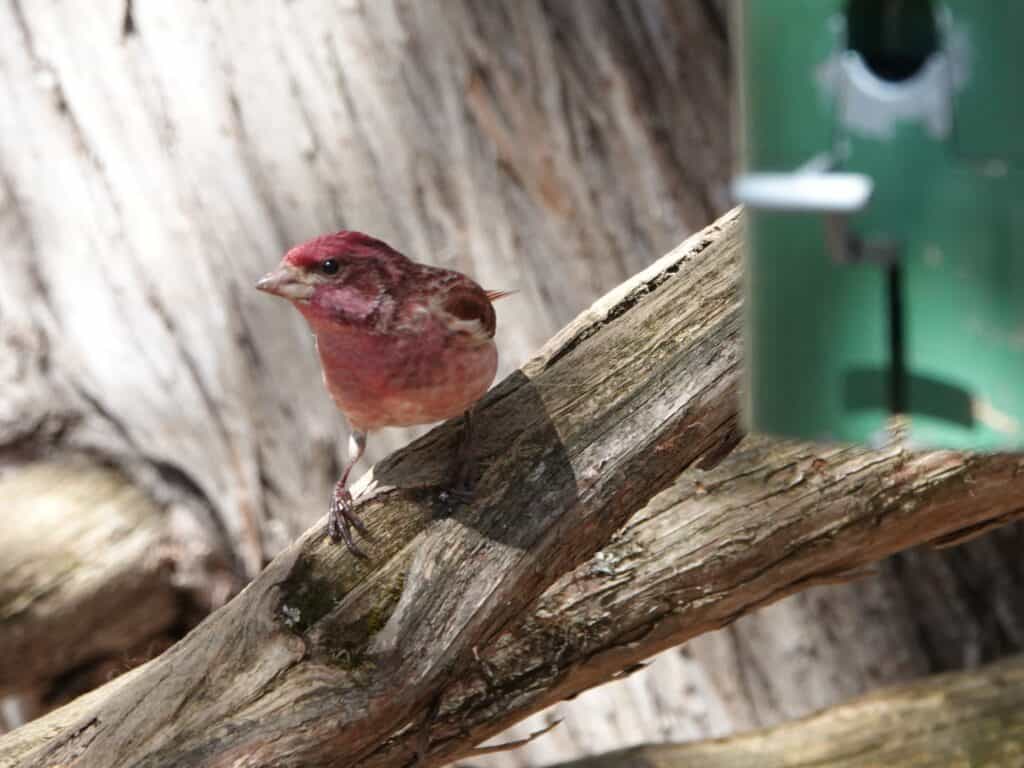
4. Pine grosbeak: Given a poor crop of mountain-ash berries east of Lake Superior, Hoar expects these beautiful birds to turn up in central Ontario this winter. Flocks of hungry grosbeaks search for fruiting ornamental trees like crab-apples and occasionally show up at feeders offering black oil sunflower seeds.
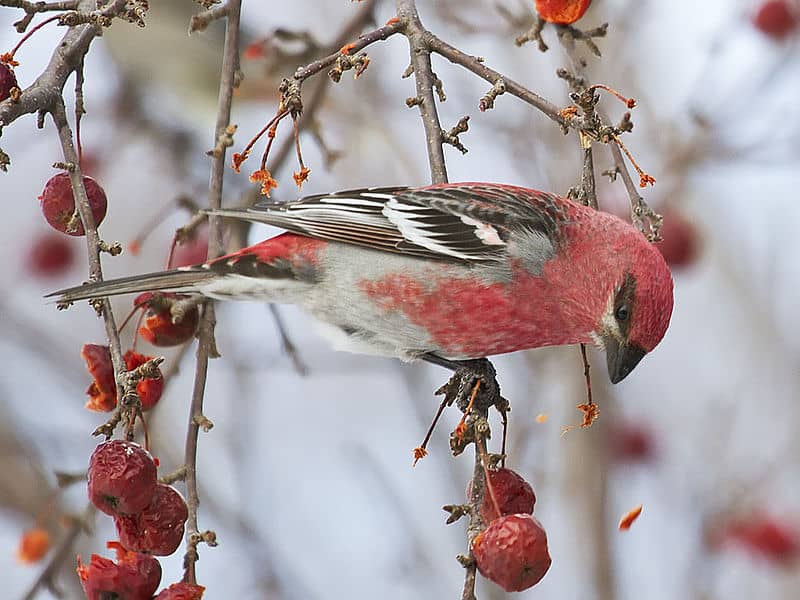
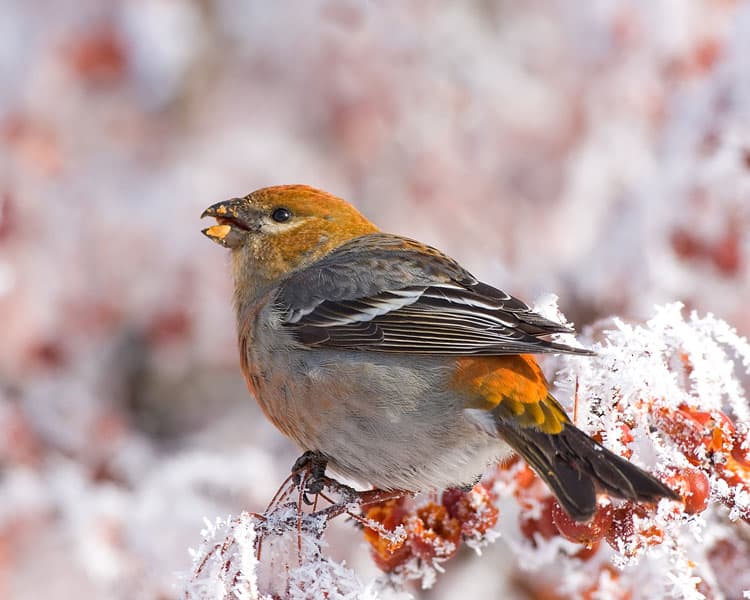
5. Evening grosbeak: This stocky charismatic finch appears to be on the move this winter. Its breeding population is increasing in eastern Canada westward to Manitoba due to increased outbreaks of spruce budworm. We can therefore expect flights of evening grosbeaks into central and southern Ontario this fall. Grosbeaks prefer black oil sunflower seeds, especially when made available on large platform feeders. They also dine on the seeds of maple and ash trees.
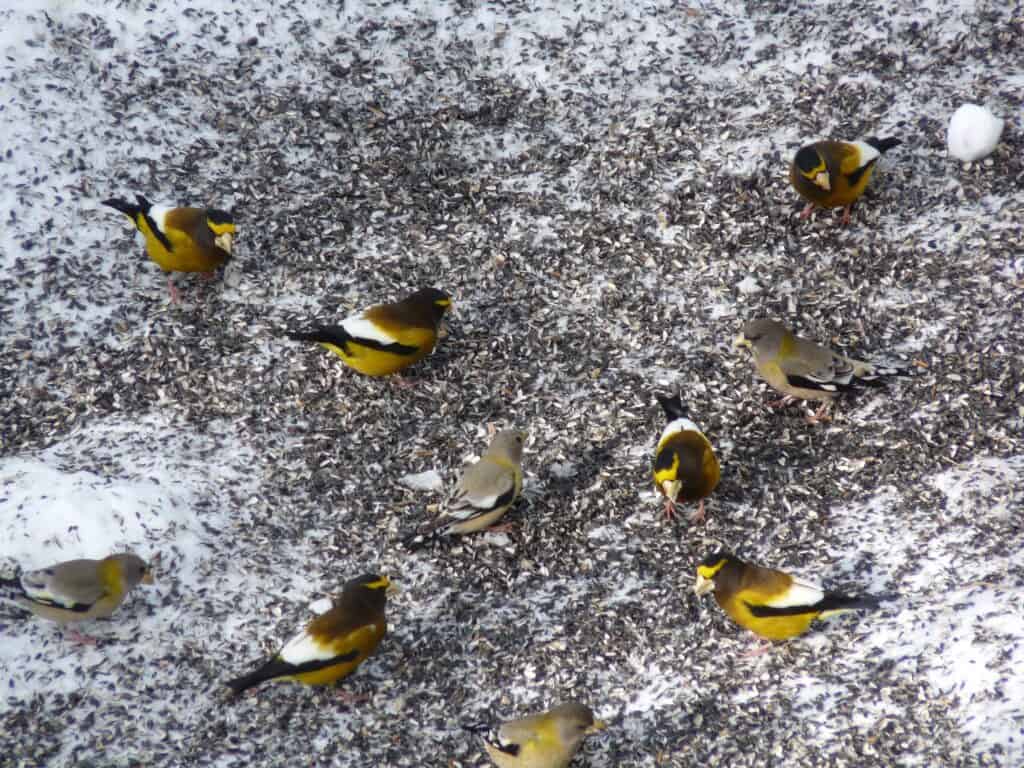
6. Crossbills: Thanks to the crossed tips of the upper and lower mandibles of their bill, crossbills specialize in removing seeds from beneath the scales of conifer cones. White-winged crossbills are attracted mostly to spruce, tamarack, and hemlock. Red crossbills forage on these same species but will also visit pines. Watch and listen for their loud trilling songs given from tree tops. Unfortunately, crossbills rarely show up at feeders.
It’s expected that most white-winged crossbills this winter will be dining on the abundant crop of spruce cones in northwestern Ontario to British Columbia. Few are expected to turn up in our area. Red crossbills, however, are a more likely bet, thanks to some areas of central Ontario with a heavy cone crop on white pines. Modest numbers are already being seen in Algonquin Provincial Park.
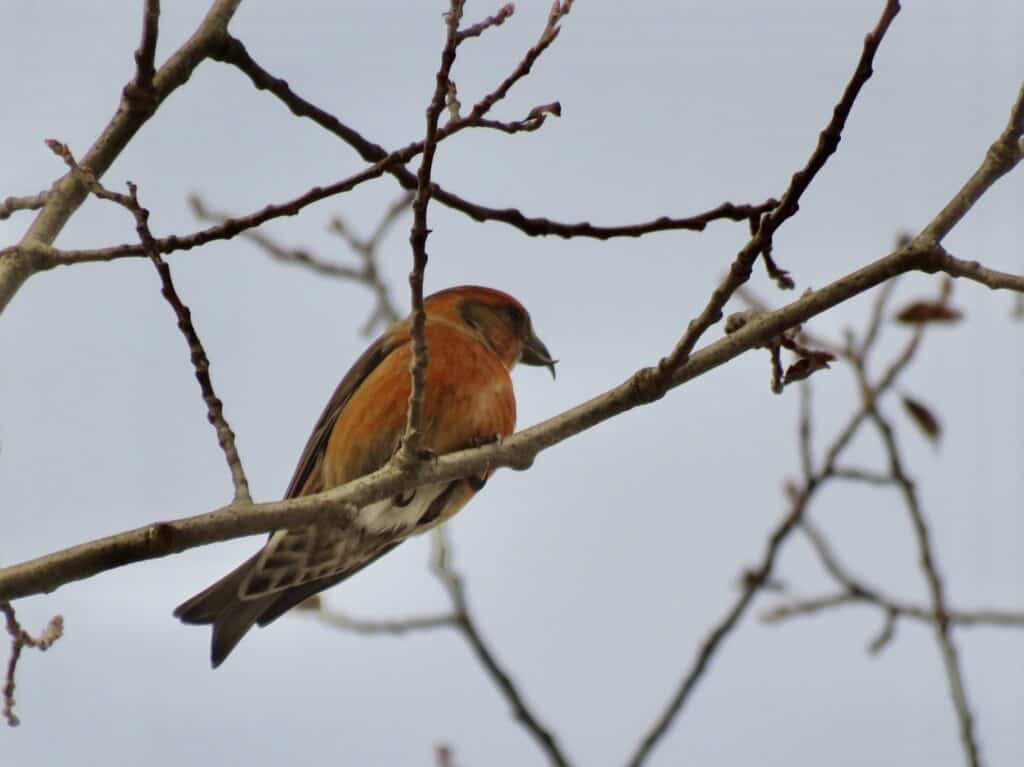
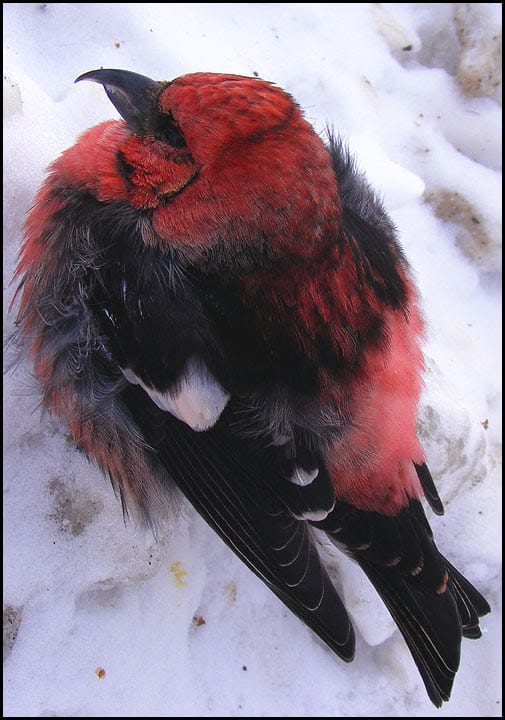
One more bird to watch for – albeit not a finch – is the bohemian waxwing. Given that this year’s berry crop on American mountain-ash is poor to below average in the eastern boreal forest, we should expect to see this species in central Ontario. These regal birds feed heavily on the fruit of European buckthorn, European mountain-ash, and ornamental crab-apples.
You can follow finch wanderings this fall and winter on eBird, the Finch Research Network (finchnetwork.org), and the Finches, Irruptions and Mast Crops Facebook group.
CLIMATE CHAOS UPDATE
Hope: Peterborough may have a new municipal program by next year to lend money to homeowners to renovate their houses for better energy efficiency. It would allow homeowners to access loans of between $15,000 and $125,000 to be repaid through their property tax bills. Under a proposed four-year pilot project, $10.9-million could be lent to homeowners starting in late 2023 or early 2024. Furthermore, the program would offer homeowners access to an “energy coach” who could guide them through the renovation. The idea behind the program is to help Peterborough with its ongoing efforts to reduce greenhouse gas emissions by 45 per cent by 2030, compared to levels from 2011.
Vote for the climate! The most important individual climate action you can take right now is to vote with climate top of mind in the October 24 municipal election. Internet voting has already started. To learn how sitting Peterborough councillors voted on climate-related issues and where current candidates in the City and in Peterborough County stand (as based on a questionnaire they received), go to https://forourgrandchildren.ca/2022-municipal-election/ As you will see, not all of the candidates deemed this issue important enough to take the time to complete the survey.
Carbon dioxide: The atmospheric CO2 reading for the week ending October 15 was 415.51 parts per million (ppm), compared to 413.84 ppm a year ago. Ten years ago (2012), the level was 391.09 ppm. Rising CO2 means more climate catastrophes ahead.
Take action: To see a list of other ways YOU can take climate action, go to https://forourgrandchildren.ca/
